What’s the plan for the weekend? If you’re in Hawaii, the answer is often a no-brainer. The beach! No matter where you stay in Hawaii, the ocean is usually only a few minutes away. (Traffic and roadwork not withstanding.) Many of us that live in Hawaii have a bag of beach essentials in the car at all times, just in case we find ourselves oceanside and in need of some vitamin sea. Whether you’re in Hawaii or visiting a shoreline anywhere on the Mainland, here’s a breakdown of the things I think should be part of any beach day kit, plus a few things that can turn the day into an adventure.
The Basics
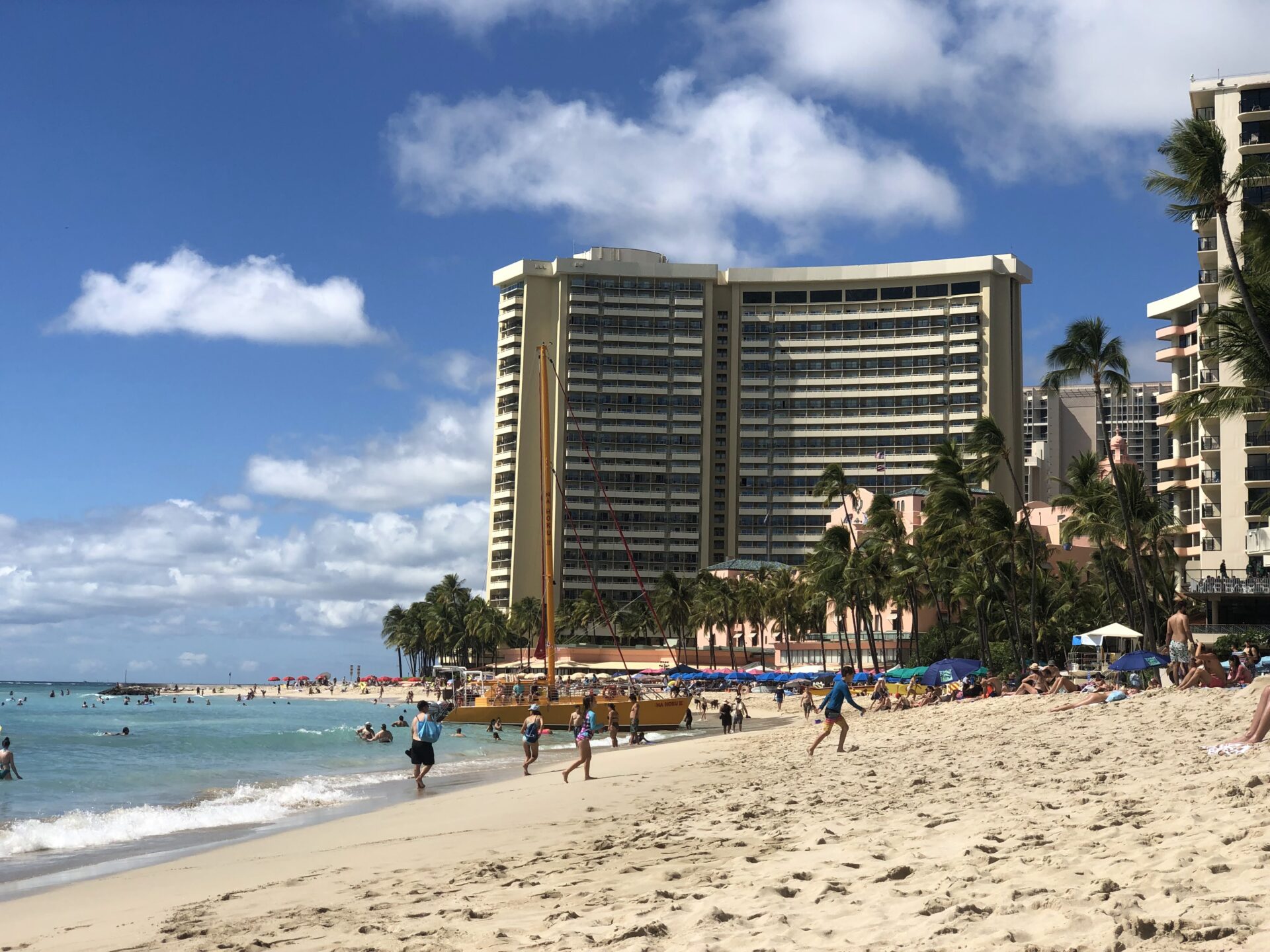 Really, the key ingredients boil down to a swimsuit and a towel. That’s probably the most basic gear that many Hawaii residents have in their car. (Similar to the way someone that lives in the mountains will have an emergency kit during the winter—okay, it’s not the same even if it feels like missing out on a beach experience is an emergency to me.) For easy packing and maximum storage, fold the towel in half vertically (or “hotdog-style” for those that also think Kindergarten had some of the best lessons), and then roll your suit up in the towel. This setup is so minimal, you don’t even need a bag to carry or store it.
Really, the key ingredients boil down to a swimsuit and a towel. That’s probably the most basic gear that many Hawaii residents have in their car. (Similar to the way someone that lives in the mountains will have an emergency kit during the winter—okay, it’s not the same even if it feels like missing out on a beach experience is an emergency to me.) For easy packing and maximum storage, fold the towel in half vertically (or “hotdog-style” for those that also think Kindergarten had some of the best lessons), and then roll your suit up in the towel. This setup is so minimal, you don’t even need a bag to carry or store it.
Sun Protection
As essential as the suit and towel are, this is probably the most important if you want to continue to have good beach days over many years. I’ve had my share of bad sun burns in my youth and I’m paying the Piper for it now. (I’m not talking in metaphors, my dermatologist’s name is Piper.) I’ve discovered the best way to avoid those nasty burns is using a multi-faceted approach. Sunscreen is often the go-to response for sun protection, and it is an important tool in the kit, but it’s not the best. Protective clothing is your best bet. That being said, here’s my thoughts on sunscreens.
- I recommend a water-resistant, reef-safe sunscreen with at least an SPF of 30. Apply 30 minutes before exposure for the most effectiveness.
- Physical sunblocks (those containing zinc oxide or titanium dioxide) are said to be more reef-safe than chemical sunblocks, which are more common. Chemical sunscreens (those containing oxybenzone, avobenzone, octisalate, octocrylene, homosalate or octinoxate) are banned from sale in Hawaii (as well as the Florida Keys).
- Look for sunscreens that have around 20% zinc oxide for the best protection. Sunscreens of this strength take some time to rub in and absorb, (and in the meantime you might look even more pale than when you began your vacation).
- National brands might be the most affordable and easiest to find, but in Hawaii there are several sunscreens made locally that work just as well and support island businesses.
Of course, forgetting to reapply sunscreen is an easy, rookie mistake. That’s why more often than not, I’m going with protective clothing. Wide-brimmed hats are a great start. Often called “lifeguard hats”, these big, straw or grass woven hats give you your own personal parasol to keep the sun off. Long-sleeved rash guards (especially those with a hood) are also a great option when going in the ocean. They can be pretty convenient since the material is usually quick to dry. For lounging on the beach, cotton is a much more comfortable option—rash guards will have you sweating faster than you can hydrate if you’re just sitting in the sun.
A small backpack or tote bag is also essential if you’re carrying anything more than your towel. You don’t need to go backpacking to use one; a 10-minute trek to a secluded beach is much easier if you bring a simple pack. One of my favorite backpacks doubles as a hydration pack. (A popular brand such as CamelBak works, but generic brands are fine.) If you fill the water reservoir with ice, it can stay surprisingly cool through the day thanks to the insulation of the pack and other filler, like a towel.
Gear for Comfort
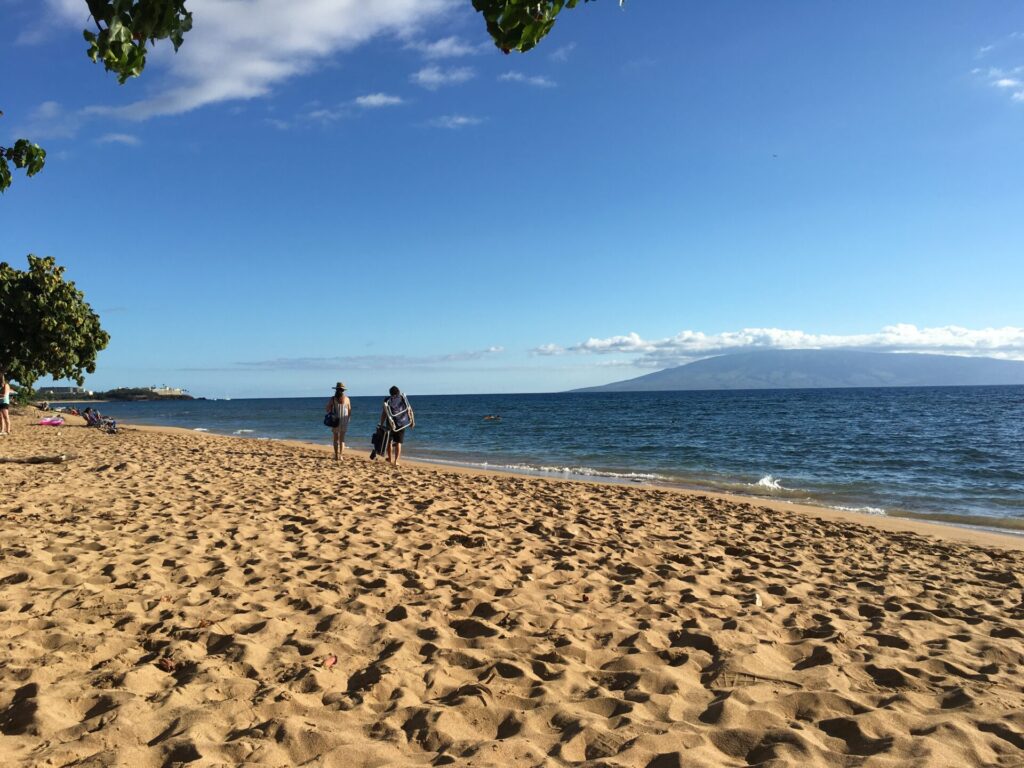 Comfort on the beach comes down to a matter of preference. Foldable beach chairs are one of the most popular options out there, and they come in a wide variety of styles and designs. The ones that have backpack-like straps are great for keeping your hands free to carry things like a cooler. I prefer those with short legs so you can more easily fit under a beach umbrella, too. Speaking of beach umbrellas, having your own supply of shade can be a life saver, but consider the conditions of your preferred beach spot before investing. For many areas of Hawaii, and Maui in particular, winds can make umbrellas more of a hassle than a help. You’ll also need a fair amount of deep sand to plant the umbrella in, so any beaches with rocks can frustrate the task of securing the umbrella. If you’ve got the space (and enough people in your group to justify it) then a simple sun shelter can make an all-day beach day way more comfortable. These also come in a variety of designs, but your most basic concept is 10 ft. x 10 ft., collapsable and is something like a tent without wall panels. These can usually be secured more thoroughly than an umbrella, but if it’s a particularly windy area or day, you may still find it more trouble than it’s worth. In either case, the lower to the ground you can keep your shading structure, the less chance it will be blown away.
Comfort on the beach comes down to a matter of preference. Foldable beach chairs are one of the most popular options out there, and they come in a wide variety of styles and designs. The ones that have backpack-like straps are great for keeping your hands free to carry things like a cooler. I prefer those with short legs so you can more easily fit under a beach umbrella, too. Speaking of beach umbrellas, having your own supply of shade can be a life saver, but consider the conditions of your preferred beach spot before investing. For many areas of Hawaii, and Maui in particular, winds can make umbrellas more of a hassle than a help. You’ll also need a fair amount of deep sand to plant the umbrella in, so any beaches with rocks can frustrate the task of securing the umbrella. If you’ve got the space (and enough people in your group to justify it) then a simple sun shelter can make an all-day beach day way more comfortable. These also come in a variety of designs, but your most basic concept is 10 ft. x 10 ft., collapsable and is something like a tent without wall panels. These can usually be secured more thoroughly than an umbrella, but if it’s a particularly windy area or day, you may still find it more trouble than it’s worth. In either case, the lower to the ground you can keep your shading structure, the less chance it will be blown away.
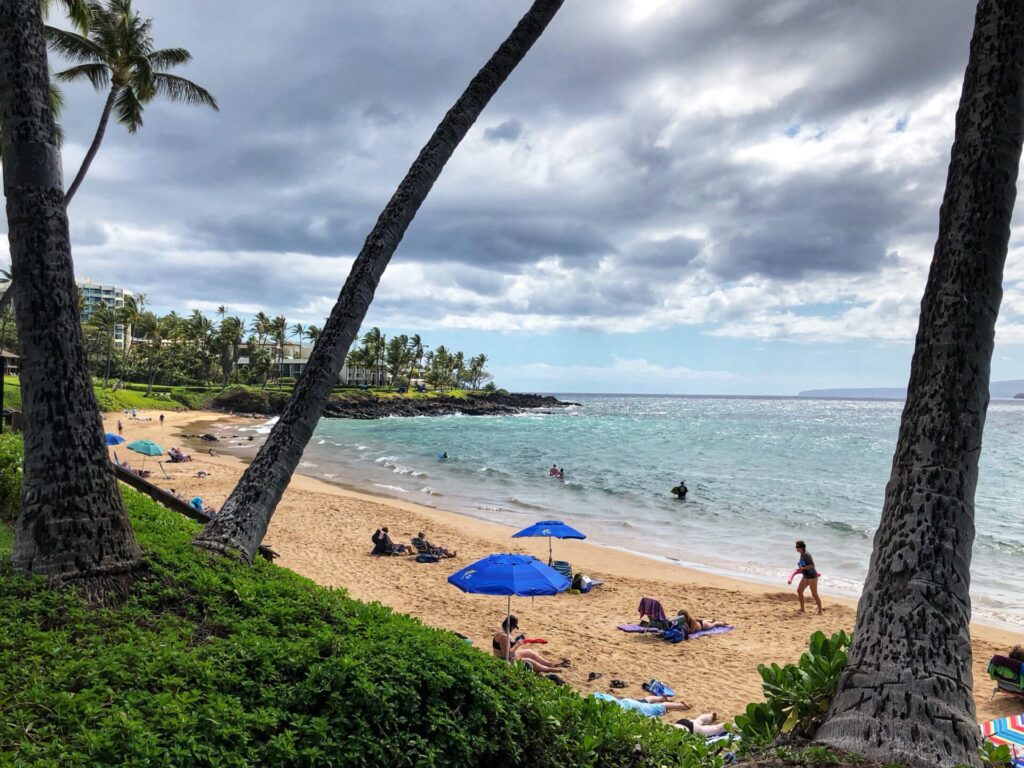 I tend to be fairly low-tech when it comes to comfort options on the beach. One of the great things about sandy beaches is they make for a naturally comfortable place to lay down. If you’re lucky enough to not suffer from back and knee issues, sprawling out on the sand is the way to go (and one less thing to carry). A large beach blanket (which can be as low-tech as an old bed sheet) makes for a great alternative to using a towel to stretch out on the sand. (And it keeps your towel, the thing you’re planning drying off with, from getting sandy.) Beach blankets that are specifically designed to be just that often have cool features such as sewn-in pockets at the corners that you can fill with sand, keeping the blanket from blowing away. A smaller, inexpensive alternative found throughout Hawaii is a grass mat. Sand doesn’t really stick to these simple mats and they roll down to make for easy carrying. You can reliably find them in ABC Stores for less than $5. (ABC is a Hawaii-based convenience store, not to be confused with the liquor store found on the mainland—though our ABC sells adult beverages, too.)
I tend to be fairly low-tech when it comes to comfort options on the beach. One of the great things about sandy beaches is they make for a naturally comfortable place to lay down. If you’re lucky enough to not suffer from back and knee issues, sprawling out on the sand is the way to go (and one less thing to carry). A large beach blanket (which can be as low-tech as an old bed sheet) makes for a great alternative to using a towel to stretch out on the sand. (And it keeps your towel, the thing you’re planning drying off with, from getting sandy.) Beach blankets that are specifically designed to be just that often have cool features such as sewn-in pockets at the corners that you can fill with sand, keeping the blanket from blowing away. A smaller, inexpensive alternative found throughout Hawaii is a grass mat. Sand doesn’t really stick to these simple mats and they roll down to make for easy carrying. You can reliably find them in ABC Stores for less than $5. (ABC is a Hawaii-based convenience store, not to be confused with the liquor store found on the mainland—though our ABC sells adult beverages, too.)
That bit about convenience stores makes for a great segue on beverages: Having a cooler at the beach is about as comforting as it gets. I’ll leave it you to figure out how you want to fill it, but a portable ice box is one of the most important things to have to keep everyone happy on your beach day. Simple is, again, my favorite way to go when it comes to hauling coolers onto the beach. The bigger, sturdier coolers definitely win if you’re planning on being out all day. Just don’t expect those with wheels to work on the sand—you’re gonna be hauling it. I’ve come to prefer the insulated, soft coolers for my beach days. While you won’t be able to carry as much, they’re way easier to deal with and much more affordable. (Coolers in Hawaii tend to go for almost double what you see on the mainland.)
Gear for Fun
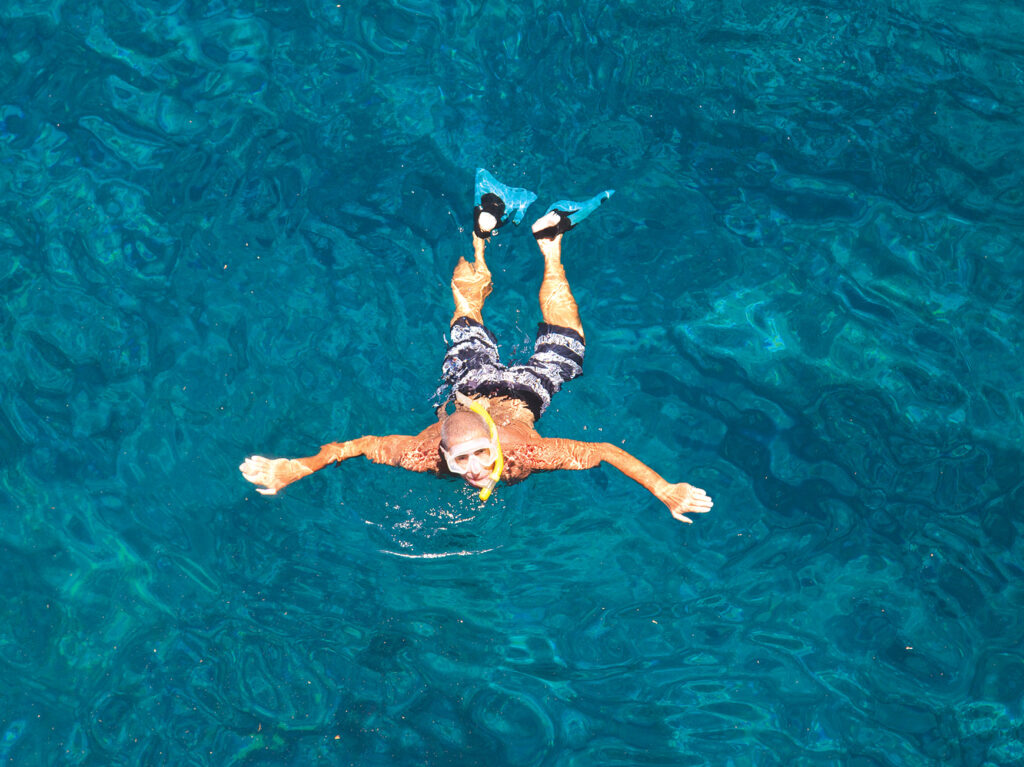 For those looking for more than sunbathing or relaxing in the shade, there’s some essential gear to consider. A mask or goggles and fins are some of the most user-friendly options. The underwater experiences they open up are a big part of my love for beach days. This simple gear is an important part of the essential kit I keep in the vehicle. It really can’t be understated how much this gear doubles as safety equipment as well. Fins give you so much more power in the water, making it easier to escape the pull of currents and waves. Goggles or a mask can help give you a better sense of comfort, knowing you can see what is around you in the water. I’ve often observed otherwise timid swimmers gain confidence the moment they can put their face in the water and have a clear view of what’s ahead of them. Snorkels just add to overall feeling since they allow you to keep your face in the water and keep breathing, without missing the action.
For those looking for more than sunbathing or relaxing in the shade, there’s some essential gear to consider. A mask or goggles and fins are some of the most user-friendly options. The underwater experiences they open up are a big part of my love for beach days. This simple gear is an important part of the essential kit I keep in the vehicle. It really can’t be understated how much this gear doubles as safety equipment as well. Fins give you so much more power in the water, making it easier to escape the pull of currents and waves. Goggles or a mask can help give you a better sense of comfort, knowing you can see what is around you in the water. I’ve often observed otherwise timid swimmers gain confidence the moment they can put their face in the water and have a clear view of what’s ahead of them. Snorkels just add to overall feeling since they allow you to keep your face in the water and keep breathing, without missing the action.
I can’t call the list complete without some kind of board. While some people seem to haul their surfboard everywhere they go, I find a boogie board, or even a kick board (similar to what you find at lap swim pools) works great. You don’t even need to take the board into the water to find them useful. I’ve often brought a boogie board to the beach, only to find the waves aren’t anything to write home about, and end up using the board in place of a beach towel. It keeps you off the hot sand and provides great padding if you’re on a rocky beach. Even as fun as boogie boards can be, probably the most joy I’ve had on a beach day has been doing some simple body surfing. Bodysurfing is the ultimate in low-cost fun—you are the board. (Those that take it to the next level add on a hand plane.) It’s an easy skill to pick up, but one that takes a lifetime to master.
These suggestions are mainly geared toward those that have to travel to the beach and haul gear. If you’re planning to vacation in Hawaii and want to stay right on the beach, the concierge and activity desk already have the gear ready for you. Check out my guides to Hawaii and beyond to find the spots that best fit your travel style. My believable guides can help bring you unbelievable vacations.
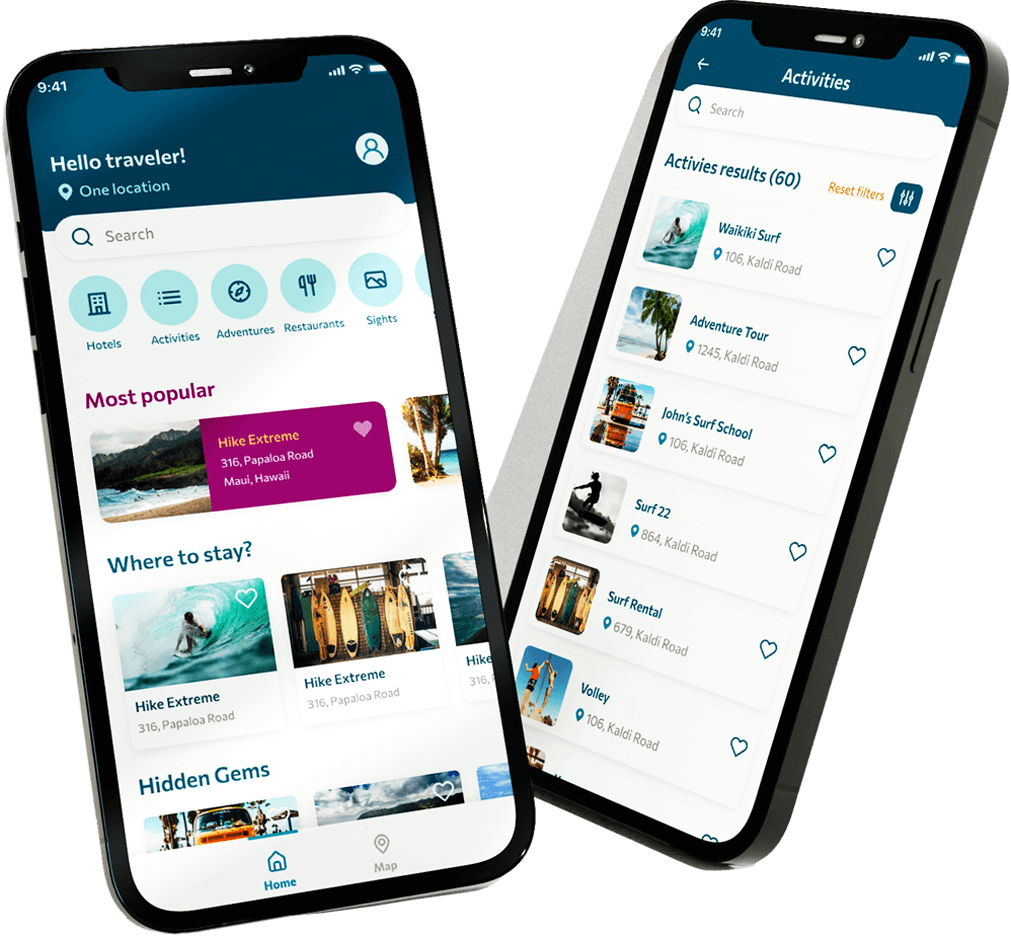



0 Comments